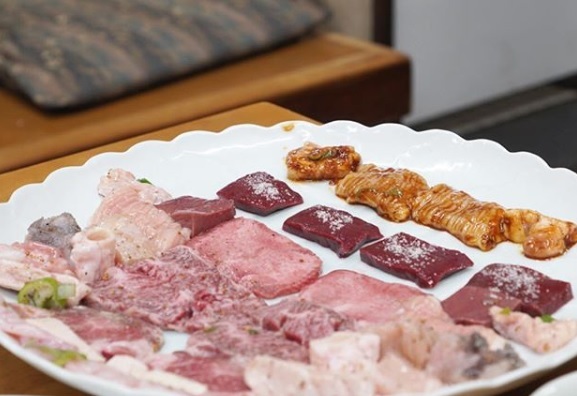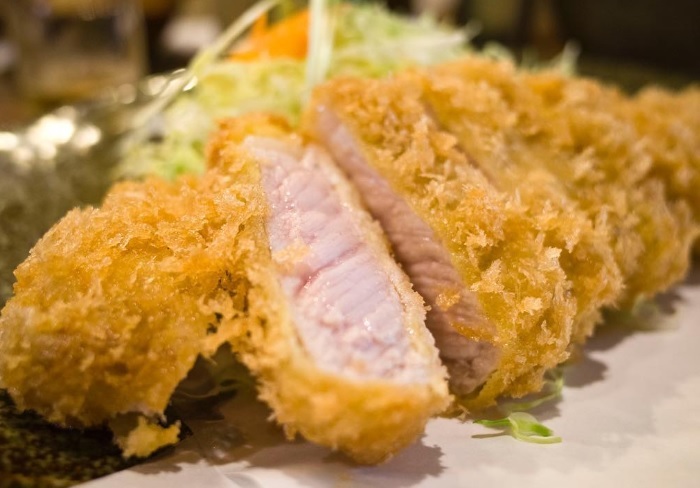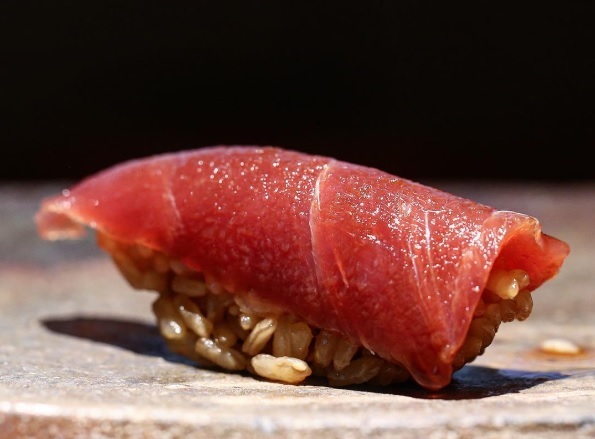The Best Sushi Restaurant in The World
Have you ever wondered which sushi restaurant is the best? I asked this question before the dawn of the internet and spent more than 30 years and hundreds and hundreds of visits to sushi restaurants—until I lost count—to find the answer.
One might think that finding the answer would be simple. Maybe just consulting the red book or OAD website would get the answer? Or how about the World’s Best Restaurant or asking celebrated food bloggers? Or should one rely on a local favorite, Tabelog? On this note, I should mention that the most interesting ones are those that appear in the list compiled by Shoot Saito, whose articles once appeared in the Tokyotabletrip website.
https://tokyotabletrip.com/en/242
https://tokyotabletrip.com/en/244
https://tokyotabletrip.com/en/245
https://tokyotabletrip.com/en/247
https://tokyotabletrip.com/en/253
Coming up with my list of sushi restaurants was very simple. I compiled the potential list before screening out and visiting the final candidates. But even after rigorously screening many out, there was a long list of final candidates. Compiling the potential list was easy as I looked at all sources to which I had access—both online and offline, especially recommendations from chefs and friends whom I considered reliable—in order to cast my net as wide as possible. After getting the potential list, I did screening based on the information I got. For the ones that I’m not sure about, it takes repeated mentions from various sources till I feel they deserve to be visited. But if recommended by my trustworthy friend — just one mention — I would immediately pursue that sushi restaurant for the earliest possible visit, which sometimes takes 2-3 years. Likewise, it takes multiple sources before I rule out potential restaurants if I’m uncertain. But I seriously have to thank my trustworthy Japanese friend. Just recently, he saved me almost 50,000 yen before I booked a celebrated sushi restaurant with a strong social media presence. Nothing is worse than a not so satisfying meal plus the loss of one meal slot.
My evaluation criteria is rather simple: I look at five attributes.
1. Taste & balance: At the end of the day, taste comes first. I want to taste the freshness of the ingredients or the skills to draw the taste out of the raw material that has been carefully sourced at their peak quality. The taste of neta and shari should be in perfect harmony. Comparing to music, I listen to all sort of stuff, from Bach to Bela Bartok, as long as the harmony is good. There are many sushi schools: Jiro style, Tsuruhachi style, Kanesaka style, Sushi Sho style, etc. I usually evaluate them against their genre as long as it’s good.
2. Texture & shari forming: the texture of the rice is very important. Nothing is more off putting than overcooked rice. It has to be on point. Shari forming is equally important. Some experts talk about dancing sushi which rice sinks because of the air pocket inside. A good one shouldn’t fall apart before hitting your tongue and should disintegrate when it’s in your mouth. Too loose is amateurish. Too tight is also amateurish. Knife skill also plays an important role as it affects the texture. The size and the thickness of the cut have to be right. Being pretty is a plus. But beauty alone doesn’t last. More emphasis is on the taste.
3. Temperature of both tane & shari: even the best ingredients fail if served at the wrong temperature. I never like the feeling of neta touching my tongue just to find out it’s too cold. I do agree with Namba San of Sushi Namba that each tane has its own optimum temperature.
4. Service & attitude: bad service and attitude could be tolerated as long as the food is good enough. In my experience, however, this is not usually the case. No restaurant is irreplaceable. There are equally good restaurants out there. If not, new ones will open. Part of service is attention to detail, e.g., the chef’s health, the cleanliness of the chefs’ hands uniforms and the dishes that are used to serve food, the temperature of the dishes, etc. Surprisingly, once in a while, I witness a sushi chef coughing or tasting his food without knowing the best practice.
5. Clientele: they are part of the dining experience, so the clientele of these restaurants also come into play. I’m more interested in visiting a restaurant that is filled with food lovers than talkative food bloggers who are busy taking perfect shots and playing with their social media accounts.
Here are the best sushi restaurant in each genre:
1. The best hikarimono (silver skin fish)
Sugita has the best hikarimono nigiri. He serves the most delicious hikarimono. The quality of his hikarimono is second to none. Two factors that made his hikarimono the best of the best are the best raw materials and the skill of the chef. His iwashi roll is to die for. His Kohada is perfectly balanced between acidity and saltiness, and the premium quality shines like the brightest star. His shari is also utterly delicious. There are lots of video clips showing how Sugita-San assembles his nigiri. Such graceful movements. He closes his eyes and communicates with the shari through touch alone. What the social media doesn’t pay much attention to is how he samples his cooking. Rather than picking it up with his finger, he discreetly places the sample on the back of his hand and turns away before placing it in his mouth and turning around to the customer: I doubt that anyone notices what is happening.
2. The best otsumami
The best otsumami is Nishiazabu Amamoto’s. His seafood sourcing is top-notch. He grills seafood himself on the flame right in front of your eyes before serving his dishes immediately at the right temperature. His nigiri is respectable, but I feel that his otsumami outshines his nigiri for now.
3. The outstanding young star sushi master
3.1 Sushi Inomata.
Inomata-San has a great sense of taste and works very hard to source outstanding raw materials. Visit after visit has ensured me of the consistency. His uni is fresh and without any hint of alum, which leaves a slight hint of bitterness. I have noticed that his uni is often preserved in nitrogen-based water to avoid oxidation. His tuna and Shiromi are top quality and in perfect harmony with shari. His wife’s hospitality is like caviar on top.
3.2 Kikuzushi.
Kikuzushi is a short train ride from Hakata and situated in a residential area. The raw material is of high quality. This is the first time I had okoze in a sushi restaurant. Okoze is a bottom dweller, and its poison could be quite painful. Both otsumami and nigiri are top class.
4. The best no frill
The best no frills are Daisan Harumi and Sushi Imamura in Shirogane. Both places can be visited every month, if not weekly. Both restaurants offer solid cooking. Some said Daisan Harumi’s shari is on the bland side, but I found it’s about right with his choice of neta. Somehow, everything works magically although his sushi doesn’t look as pretty.
5. The best hospitality
The best hospitality is at Sushi Take in Ginza. I felt so relaxed and unwinded after the warm welcome by Takeuchi-San. For the first time, I feel this will be where any foreign visitors are sincerely welcome without any discrimination. Once I heard some doubts. Without gender bias, I think her nigiri is highly respectable. I don’t think there’s a better sushi restaurant within the same price range. Her nigiri omakase dinner costs less than 15,000yen, so I feel it is unfair to compare it to a 30,000+ yen or 40,000+ yen sushi dinner, which is becoming the common prices these days. Her pricing is very reasonable and made sushi accessible to people who don’t want to spend too much or go through a lot of hassle to book a seat.
6. The best overall and my most favorite sushi restaurant:
Shimbashi Shimizu.
In my dining experience, nobody could prepare such delicious mollusks. Hands down, his abalone is the most delicious and tender. The hamaguri is excellent, with an amazing dark sauce, tare, and has the right viscosity (not too runny, not too thick). The depth of taste compliments the texture of the hamaguri. His boiled octopus is so soft. Many chefs make the mistake of cooking it so long the outer membrane of the octopus becomes too soggy; I find it’s too slimy when the outer membrane loses its texture. A well-cooked octopus should be soft throughout. Nigiri at Shimizu is best described as old school and the taste of edo mae at its best, so I would say that Shimizu isn’t for everybody.A strict no photos policy might be a turn off for some people too. Once when I was having lunch, a regular brought in his foreign guests. One of them decided to stand up and walk to the other end for a chit-chat with another friend on the other end. That was enough to cause a chill on my spine.
Although Shimizu-San said nothing, I felt that a dark cloud was already building. I found it’s amusing to hear from young sushi chefs how much they are so terrified of Shimizu-San. Many found his presence intimidating, but there are many chefs regard him with deepest respect. For me, his presence gives me a peace of mind that it will be another great meal. Booking Shimizu is not difficult for regulars or local Japanese, but it’s impossible for foreigners without any help and in the company of a Japanese. None of the concierges ever succeeded, so it’s better not to bother asking them. The reason is not xenophobia but just the language barrier: the restaurant wants to be able to proficiently communicate with their clients.
7. The best newcomer:
Tomidokoro.
Tomidokoro is a new 6-seat sushi restaurant that has been open for five months. His Hinoki counter is still fresh and in mint condition. The chef is from Hokkaido and learned his craft from Sushi Shin in Nishiazabu. Sushi Shin’s chef got the influence of the master chef in the lineage of Sushi Tsuruhachi. His rice has an acid bite as he uses only the red vinegar, akazu, without blending it with other types of vinegar like the white vinegar or Komezu. His shari is a typical ‘otoko’, which is big and bold. When classified by the size of the shari, we can see the pretty ones like those at Sushi Ichiyanagi, Kurosaki, etc., which are quite small, and we can also see the sizable ones like the ones at Sugita, which fit the tradition of the true edomae sushi. His nigiri would answer the call of sushi fans who want an authentic taste. This fits the hardcore locals, rather than the young international diners, I reckon. The ambiance is very intimate. When the chef graced me with his smile, it was very relaxing, and the atmosphere was very laid back. It takes a lot of guts to do a six-seat sushi restaurant in Tokyo because of the economics of maintaining the balance of cost and revenue. His neta is awesome, given this price point. The pieces of silver-skinned fish, like sayori and kasugo, are perfectly salted, balanced, etc. His young iwashi piece was amazingly delicious. His ni ika was magnificent, with nice tsume. Usually, I see ni ika as otsumami, not nigiri like this. His seashell pieces are respectable. The temperature of his tare (topping) is also right. I believe, if given some time to iron out the operational issues and hone his nigiri-forming skills, we will see another outstanding sushi chef in our generation. I’m not a fan of recommending something difficult or impossible to make fun of people who can’t get in. Unfortunately, Tomidokoro seems to have already closed its doors to foreign guests due to the lack of foreign language proficiency of the staff. There's no point in asking the hotel concierge to call. The best and easy way is to get your Japanese friend to accompany you. Booking via Japanese friends shouldn’t be too difficult, for now. But if you can’t find anyone to help out, fret not. There are no restaurants worth too much trouble. There are many good sushi restaurants foreigners can book, and they accept booking via the local hotels in Japan. Or you can just visit Sushi Shin.
The heirs of the masters:
If you can’t visit the masters, it’s not the end of the world. There are apples that don’t fall far from the tree. These are some of the worthy young successors:
1. Sugita
Sugita-San has more than one student. The one that I’m confident to recommend to readers is young Riku Toda of Sushi Ichizu. Although hampered by being far from Toyosu market, which hinders the close relationship with the fish brokers that allows one to get the best neta (and also by the import tax), his nigiri is delicious. Furthermore, Riku Toda is the only sushi chef younger than 30, either inside and outside of Japan, whom I would recommend with confidence. Although I cast a very wide net, none of the Sushi restaurants outside of Japan made it to the final cut of this article. There are a number of good places outside of Japan, but none could be regarded as being among the best.
2. Sushi Saito
I recommend Hashiba-San from the Shun side of Sushi Saito and Sushi Ishiyama in Ginza.
3. Shimbashi Shimizu
Visiting Sushi Take allows one to catch a glimpse of Shimbashi Shimizu and experience the best hospitality.
4. Araki
Although I never visit Sushi Ichikawa, I hear from reliable sources that Ichikawa San is very good. Ichikawa accepts only bookings via booking agent website; I don’t go through this kind of agent, so I skip.
5. Sukiyabashi Jiro
Maybe Harutaka. I have to admit that the Jiro school isn’t my cup of tea, so I didn’t pursue his other apprentices in Tokyo and NYC.
One might ask why I chose Shimbashi Shimizu as my favorite restaurant. It’s just a matter of preference. I believe in Shimizu-san’s philosophy that he doesn’t pursue the most expensive ingredients, but his touch is quite magical in converting basic ingredients into something delicious. It takes lots of skill. Items that easily speak for themselves, like uni, aren't his strength as he doesn’t pursue the most expensive raw material to make his sushi accessible to his regulars. His decor is simple, which suits my needs.
I had one interesting conversation with an ex-chef of 15East. He said when it came to top sushi restaurants; there’s no real number one. It’s just a matter of preference. Everybody has his or her own list. So now the ball is back to you. Which sushi restaurant is your best sushi experience? No need to confine yourself by the power of marketing by celebrated food bloggers. Sometimes, they praise a sushi restaurant in exchange for a direct or indirect favor. All you need to do is to do some research and visit one that fits your bill the most. I would love to hear where would be the best sushi restaurant from TTT readers, too.
Writer:Localtaste
Local taste had taken a long journey searching for delicious meals long before the dawn of social media, roaming from one city to another from the Far East to the west, over 160 cities in four continents and more than 400,000 miles during the last 37 years.
His dining spots over thousands of restaurants range from eating in a hole in the wall in Asia to all ten Michelin 3-star restaurants in Paris. More than decades was spent on chasing for perfect xiao long bao.
Because he is not in food business nor food writer, his article won’t be found elsewhere but exclusively on tokyotabletrip.com as a tribute to Leo Saito’s altruistic deed to help international visitors discover the beauty of Japanese cuisine.
Register account first.
Register










Comments 5
5
ChuToroZuke
I was very late to seeing this article, but thank you so much for it LocalTaste san!
After maybe 3 to 4 visits to Tokyo, and while I do not have the breadth or depth of experiencing so many other sushi restaurants like others, I have concluded that Shinbashi Shimizu (even without trying the other schools like Take and Tsuruhachi with Igarashi san) and Kurosaki are my most favorites.
With Shimizu it is a totally different level altogether. You are looking at a chef with not just serious skills, but the talent to be able to apply what he knows and can do to completely elevate the experience to the next level and in fact maybe towards the pinnacle. The overall experience is still very old school, but is far better than other old school places like Kizushi, yet it is not upscale or snobby and still retains that neighborhood feel.
After having lots of room temperature to cold kurumaebi in Tokyo, I must say that Shimizu's rendition, even though not cooked to order, still retains a ridiculous amount of flavor, and has the right mouthfeel. His marinated shellfish is legendary, and the last time I went, his hamaguri was so damn good, especially the top center portion where it felt like a 63 degree egg yolk....or that perfect texture of Cantonese style braised abalone (the dead center portion where it should be like that). The interaction of the tsume with that center part of the hamaguri was probably one of the best bites and taste experiences of my life.
As a major sake lover, I have to say I'm a bit saddened with his random small selections, however he did stock two excellent choices last I went, one of which was a perfect match with his shellfish (and drank like a white burgundy Premiere Cru)...of which when that happens, you get the best of both worlds; maximize flavor of the sake and literally a 100% matching with the profile of the hamaguri/tsume/mouthfeel/shari (though this is all based on luck of what they have when you visit, and whether it works). The sad part is many other sushi restaurants don't put effort into their sake list, and they don't design their sushi profiles to match (let alone matching with champagne or a dry style white wine) and they also don't think about the pairing side for the customer.
Last but not least, Shimizu's sushi rice is just amazing....the perfect pitch of salt, sour, temperature, umami, and it's amazing how ridiculous aromatic it is and how it blends perfectly with all of his neta for that fantastic bite and eating experience. Great sushi should be one of those experiences where you close your eyes and clench your fists because it really hits you hard, or as the millenials say, being taken to "poundtown" in the sheets...but except at the sushi bar.... and without making O sounds (that's "Omakase" lol) but it's ok to make the O face because that's how great the sushi is.
Seriously though, about half way through my 2nd Shimizu visit, I was literally able to taste and feel/sense the craftsmanship put into each piece of sushi. Flavor, mouthfeel, temperature, texture, balance, the tsume, the natural flavor of the ingredient maximized and realized, the aromatics of the sushi rice/texture/stickiness, the balance, knifework etc. Kind of like the scene in Jiro Dreams Of Sushi where the female customer is eating a piece of uni sushi and she smiles big with her eyes closed....except with Shimizu you emote the same feelings, but the intensity and satisfaction is so strong....and it makes you feel blessed and fortunate to be able to taste such greatness, and at the same time wonder how Shimizu san accomplishes all of this. It just makes me appreciate this place and Shimizu san's craft so much more each time.
thetrashmouth
Hi, thank you for the very insightful article. I heard Shimizu can only be visited if you are accompanied by a Japanese speaker - is this the case? Also I know Sugita is extremely difficult to book, what is the reservation system actually like? Is it regulars only similar to Saito and is it worth it to subscribe to premium concierges like Arry's? Thanks!
Just_Ingest
IG: SushisibzThanks Localtaste for this article!
Shimizu is also my favorite restaurant. If I may, I would like to note a few points as to why I feel this way. It goes beyond the food, which is flawless from start to end. There are a few points that elevate the Shimizu experience from mere foodgasm-fiesta to something truly special. Perhaps others can also see if they feel the same.
1. The price. To be honest, I don't know anything about the cost of raw ingredients and such, but if I were to take cost of labor into account and make an informed guess, I would say Shimizu-san doesn't make a lot of profit. The thing is, I believe he can charge double what he does and people will still come. But based on his personality and philosophy, I also feel like he would never do that. To always charge modest prices, even while the Hatsunes and trendy establishments of 2019 are charging gold mines - such is Shimizu. This is beyond respectable in my eyes.
2. Zero self-promotion. Despite his godlike skill level, Shimizu-san doesn't flaunt himself. No Michelin stars. No books. Few TV appearances if at all. This is the exact opposite of someone like Jiro who I feel is determined to show off his greatness and autographed pocketbooks. No luxury decor. No gimmicks. No maguro/uni displays - in fact, most of his neta is hidden in boxes. Shimizu-san lets his ingredients speak for themselves, and the legendary pieces like hamaguri, anago, and other fish indirectly demonstrate his techniques. He promotes basically nothing about himself, but I could feel the grit and thought that came into everything that was put in front of me. That is a very rare and special feeling. And that is more than enough.
3. Discipline. Some people say Shimizu-san is a pretty chill and funny guy. I wouldn't disagree, but I will also say I am extremely nervous before entering his shop, even on my third time. I have not felt this way anywhere else. Compared to other sushi masters, Shimizu-san has an absolutely commanding presence over his space. The single "irashai" that he utters when I enter makes me feel uneasy. Yes, the experience becomes comfortable as you settle in, but know that he is always watching you, and the sushi bar is HIS. So how is this any good? Because you know, and feel, that you are in the presence of a true master, the OG of all OGs, who disciplines you in his own way. This is another contributing factor that makes a visit here special - the nervous anticipation you get knowing that you are visiting the Mecca of sushi restaurants.
Some people might think that Shimizu-fans are giving him too much credit, but if you have not been there then I don't think it's fair to make this statement. In my opinion, he is really that good.
guest
Is the celebrated Sushu restaurant with a strong social media presence costing 50000yen hatsunezushi?
Leo Saito
chief editor, TokyoTableTripAlthough likely to stir up some controversy, localtaste has written a very interesting article about sushi restaurants for TTT readers. Please have a look at it.